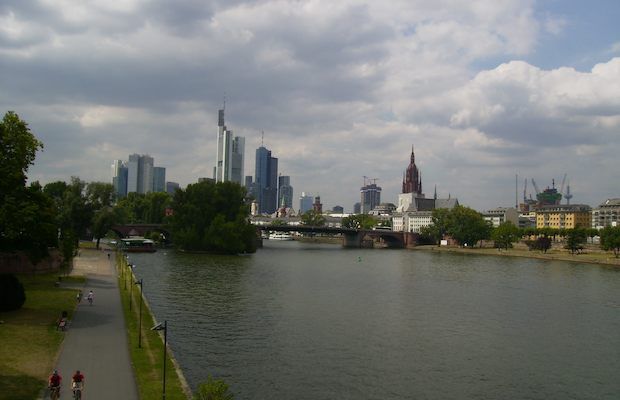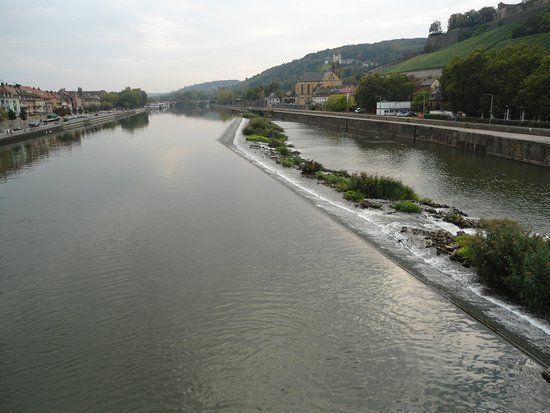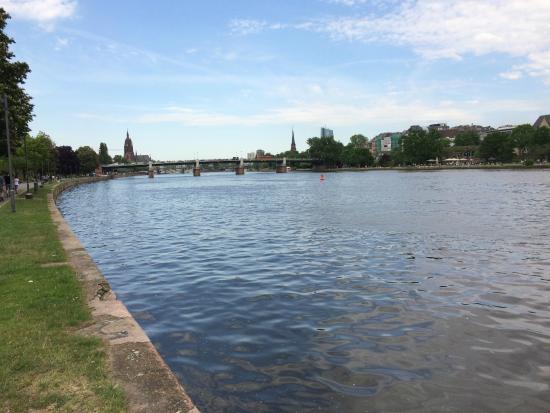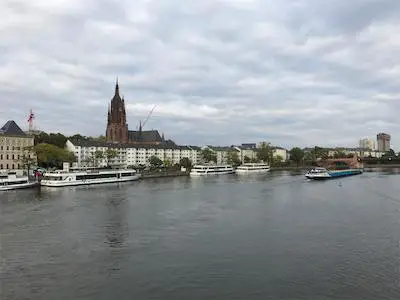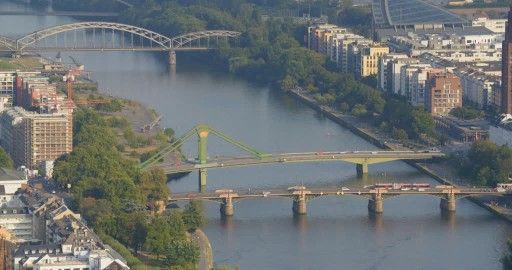The Main is a river in Germany. At 527 kilometres long, it is the longest right tributary of the Rhine. It is also the longest river to flow entirely within Germany (if the Weser and Werra are considered as two separate rivers, they are longer together). The largest cities on the Main are Frankfurt am Main and Würzburg.
Indice De Contenido
History of the Main
Although the heyday of the Main region came much later, Celtic architecture dating back to 1000 BC can be found along its banks. Settlements along the Main flourished during the Roman Empire (see article: Duraton River).
Mainz was founded as early as 13 BC, with other cities springing up along the banks of the river in the 1st century AD. Over time, the Main became a vital trade route for the expanding empire. Charlemagne even left his mark here, investing in the construction of the canal and building the gigantic Würzburg Cathedral in the 8th century.
The Main would prove to be a springboard for inventions and political developments that are still in use today. The Frankfurt Fair, unique at the time, was first mentioned in 1150. Johannes Gutenberg invented his world-changing printing press in Mainz in 1436. As the seat of German democracy, kings and emperors were elected in Frankfurt between 855 and 1792.
During the Second World War, the cities along the River Main were particularly hard hit. On 16 March 1945, around 90 per cent of the city of Würzburg was destroyed in 17 minutes by some 225 Lancaster bombers in a British air raid.
The extensive medieval city centre of Frankfurt was completely destroyed, and Mainz lost 80 per cent of its buildings. Bamberg is one of the few cities in Germany that was not destroyed in the bombing raids of World War II, as a nearby artillery factory prevented aircraft from approaching.
Features of the Main
It is not surprising that a waterway that connects to the Blue Danube and eventually the Black Sea is surrounded by colourful cultures and landscapes. The Danube’s main canal passes through intricate locks and dozens of charming villages. One of the coastal towns along the canal is Nuremberg (see article: River Niemen).
Internationally famous for the post-war Nuremberg Trials, travellers can experience the softer side of the city with traditional gingerbread, tasty sausages and handmade toys.
Leaving the canal, the first stop on the Main is the medieval town of Bamberg, a stunning city that has been declared a World Heritage Site by the United Nations Educational, Scientific and Cultural Organisation.
Explore the city’s magnificent cathedral, old town hall overlooking the River Regnitz and winding streets lined with charming 18th-century houses and villas. Known as the ‘Pearl of the Romantic Road’, Würzburg is surrounded by rolling hills covered in vineyards. The magnificent Episcopal Residence is a classic example of Baroque architecture and was described by Napoleon as “the most beautiful parsonage in Europe” (see article: River Nelson).
River Main catchment area
The River Main is an important tributary of the right (eastern) bank of the Rhine in Germany. It is formed near Kulmbach by the confluence of the White (White Main), which rises in the Fichtel Mountains, and the Red (Red Main), which rises on the eastern slopes of the Franconian Jura.
The river flows south-west around the northern edge of the Franconian Mountains to Bamberg, where it joins the Regnitz from the left. From there, the Main flows south and east between vineyard-covered hills to Würzburg and then north between the wooded Spessart and Odenwald to Gemünden, where it joins the Franconian Saale on the right.
Turning sharply south, it joins the Tauber on the left at Wertheim and heads west and then north to Aschaffenburg. From there it follows a generally westerly course through Frankfurt am Main to its confluence with the Rhine above Mainz, after a journey of 326 miles (524 km).
The Main has been canalised upstream to Bamberg and forms part of the Main-Danube Canal (completed in 1992), which links the Rhine and Danube to form a 2,200 mile (3,500 km) canal from the North Sea to the Black Sea (see article: Rio Grande de Matagalpa).

